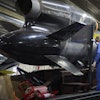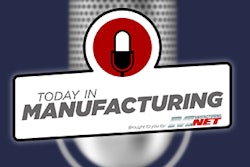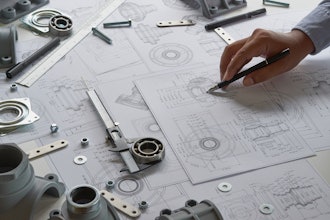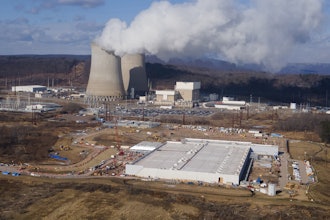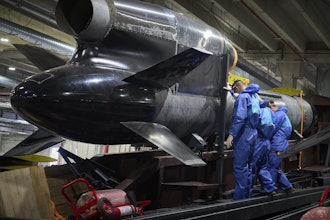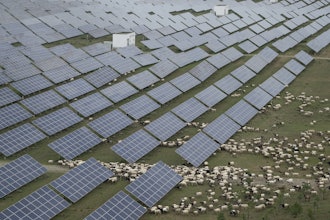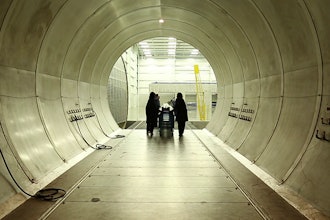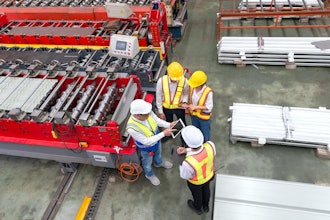
Air pollution remains Europe’s top environmental health threat, linked to strokes, lung diseases, asthma, and even dementia. Millions of EU citizens breathe unhealthy air daily, and the costs are enormous: a recent analysis found air pollution costs the EU roughly €600 billion per year ($685 billion, about four percent of EU GDP) in lost productivity, healthcare and crop damages.
Recognizing these human and economic burdens, this year the European Commission launched its new Clean Industry Deal (CID). The CID is a sweeping strategy to make industrial decarbonization a driver of growth, while reviving competitiveness. As the Commission itself explains, it aims to “turn decarbonisation into a driver of growth” for European industries.
The Impact on European Manufacturers
The CID has three core goals: deep decarbonization of industry, enhanced global competitiveness, and a broad economic transformation of European manufacturing. The CID is being treated as the Green Deal’s successor by the European Commission and is intended to accelerate economic decarbonisation while strengthening industrial capacity.
It explicitly ties climate action to competitiveness: making clean investments pay off, speeding new technologies to market, and creating skilled jobs. The CID’s stated objectives include simplifying while strengthening regulations, fast-tracking funding for clean projects, strengthening energy-intensive and clean-tech sectors, and ensuring resilient supply chains.
Alongside the CID, the Commission’s Affordable Energy Action Plan aims to cut industrial power bills by expanding renewables, completing grid interconnections, and lowering taxes on electricity. Faster permits for renewable projects and support for power purchase agreements (PPAs) are planned, helping manufacturers lock in long-term green power at predictable prices.
Procurement and Market Prioritization
To spur demand for low-carbon goods, the CID calls for an Industrial Decarbonisation Accelerator Act. This would introduce sustainability and ‘Made in Europe’ criteria in public procurement, along with voluntary carbon-intensity labels on products. In practice, that means EU governments will prioritize or require goods made with clean technologies (for example, using low-carbon steel in vehicles) to help create a market that prioritizes them.
The EU will mobilize a new Industrial Decarbonisation Bank and expand its Innovation Fund. The Commission plans about €100 billion (just over $114 billion) in funding from existing EU budgets and carbon market revenues. It will also create a special state-aid framework to fast-track support and allow tax breaks for green industrial investments. All this is intended to de-risk cleantech deployment in factories, mitigating the high initial costs that have acted as a barrier for many manufacturers.
The CID emphasizes resource efficiency. The EU will enact a Circular Economy Act to emphasize reusable materials, and even set up a joint raw-materials purchasing center. This demand aggregation will allow EU companies to negotiate better prices for scarce minerals and recycling inputs. This reduces dependence on foreign suppliers and cuts waste.
Sector-specific Transition Plans
The Commission will issue detailed roadmaps for each key industry. Draft plans are underway for automotive, metals, chemicals, transport, and the bioeconomy. For example, the automotive plan will target battery and semiconductor needs along the supply chain.
These provisions represent a radical reset for European manufacturers. To comply, many factories will undertake big operational shifts. In short, the CID forces EU manufacturers to go green or risk being left behind. They will need to embrace new clean-tech equipment and processes, even as they enjoy more funding and a friendlier regulatory climate for doing so.
New Technologies and Processes
Manufacturers will need to invest in electrification, renewable power, green hydrogen, carbon capture, or other clean processes. The EU’s new funding aims to accelerate this, like its €1 billion ($1.14 billion) pilot auction for industrial decarbonisation. Fossil fuel processes will be gradually phased out, reducing reliance on Russian energy, and other suppliers from outside of Europe (America included).
Firms will be required to source more clean inputs and recycled materials. With the EU establishing a raw-materials hub, companies may join co-ops to buy strategic minerals together. They will also need to adapt product designs, like using recycled steel or low-carbon batteries, to meet expected EU requirements.
It goes beyond the physical supply chain. Smart and IoT-driven factories will need to ensure investments in systems like cloud optimization and AI involve the use of green data centers.
Early-Adoption Advantages
Companies that move first may reap benefits. The CID explicitly prioritizes market leaders, giving early movers of green products preferential treatment. Front-runners will get early access to the EU’s funding, state aid, and procurement contracts. could reward front-runners.
In the short term, smaller firms may struggle with the upfront costs and complexity. Along with this, some critics warn that the CID will fail without simplified bureaucracy and low energy prices. It will certainly test EU governments in easing permitting and avoiding bottlenecks. For the average person in the impacted industries, there will likely be an extensive need for retraining support as the economy shifts towards greener products and processes.
Potential Implications Beyond Europe
The impact of the CID reaches far beyond EU borders. It includes new trade and regulatory tools that could reshape global manufacturing.
The EU is planning bilateral ‘CTIPs’ with strategic partners to align trade rules with clean-tech goals. These partnerships will streamline investments and regulatory cooperation to secure global supply chains. For example, it could harmonize international standards on batteries or carbon pricing.
Along with the focus on cleaner production, Europe will enhance its use of anti-dumping and anti-subsidy Trade Defence Instruments. This means faster investigations and higher tariffs on goods deemed unfairly priced, like on cheap electric cars from outside the EU. Their aim is to prevent any global overcapacity from flooding the EU market.
Europe’s existing Carbon Border Adjustment Mechanism (CBAM) is a tariff-like measure designed to impose a carbon price on imported goods to level the playing field between EU and non-EU producers. The CID calls for a simplified, stronger CBAM. Europe will be introducing a carbon border tax in 2026 on goods like steel or cement, but under the CID, it will be reviewed and possibly extended to more products.
The goal is to ensure imports face the same carbon price as EU-made goods. For example, a steel mill shipping to Europe must buy CO₂ permits under CBAM to equalize its carbon cost.
What Does This Mean for American Manufacturers?
For U.S. manufacturers, these changes pose significant challenges.
With generous EU state aid and protective trade policies, European companies may gain a pricing edge. The CID explicitly allows EU governments to give tax incentives (like fast depreciation) for clean investments made in Europe. Meanwhile, U.S. firms generally face stricter state-aid rules. As Europe lowers its firms’ energy and investment costs, American makers could face tougher competition both at home and abroad.
The planned overhaul of EU public contracts will introduce ‘buy Europe’ criteria. In practice, this means government and state-linked projects would favor EU-made or EU-certified products. US exporters may find themselves at a disadvantage in EU-funded contracts, unless their products meet the new ‘European preference’ rules.
The CID encourages sourcing locally and diversifying suppliers. Its raw-materials strategy could sideline foreign suppliers if Europe can successfully secure materials internally. However, its CTIP policy will allow for partnerships with European Industry if suppliers qualify for that status. This could open some markets for US firms in strategic sectors, but it’s likely there will be a large focus on Europe’s own supply lines and reducing imports from elsewhere.
CBAM Compliance Costs
Perhaps the most direct impact is on exporters of carbon-intensive goods. Under CBAM’s rules, U.S. steel, aluminum, cement, and chemical exporters to the EU must report their embedded CO₂ and buy EU carbon certificates. In effect, this is likely to be a carbon tax on exports. For a US steel mill that can’t decarbonize quickly, this raises export costs substantially. It may force US producers to invest in cleaner production methods simply to remain price-competitive in Europe.
A market the size of the EU setting such stringent regulations could lead to them becoming the de facto global rules. CID measures like carbon-footprint labeling or material requirements will likely ripple worldwide. For example, the Commission is considering non-price requirements in product rules, like requiring a minimum share of low-carbon steel in construction.
Even if a U.S. firm only wants to sell in Asia or America, it may need to adopt such standards if its intended market is part of a supply chain linked to Europe.
The Clean Industry Deal makes the EU a forerunner in green manufacturing policy. American companies will need to adapt to maintain a market in Europe. They’ll need to secure clean energy supplies, track carbon emissions, and possibly reshape product lines to meet EU thresholds. For some American firms, especially in high-emissions industries, the CID’s ripple effects could be profound.
Europe’s CID is coupling massive public funding and streamlined regulations with trade and procurement tools for a full-scale industrial makeover. If successful, it will reshape not only EU factories but global markets, as carbon costs and ‘green’ requirements in Europe will effectively raise the bar worldwide.
For American manufacturers, the message is clear. Success in one of the world’s largest single markets will increasingly demand cleaner products and processes, whether through adjusting supply chains or absorbing carbon taxes on exports. The Clean Industry Deal’s legacy may well be that it forced industries everywhere to race toward net-zero or face losing their share of the future market.



